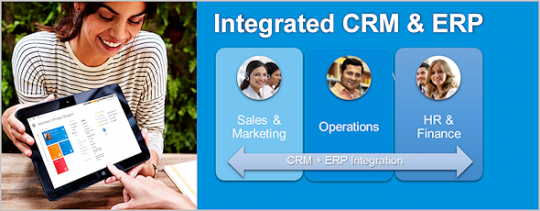The Power of Integrated CRM and ERP: How Microsoft Dynamics Customers Benefit from Smart Selection

Customer Relationship Management (CRM) and Enterprise Resource Planning (ERP) are not mutually exclusive. Historically, CRM was considered a front office solution and ERP a back office one: The former used mainly by sales and marketing staff, whilst the latter, locked away in the dusty back office, accessed by only a few privileged finance users or senior operational managers. However, things are changing and the line between the two has narrowed. Companies can now share data seamlessly between the two systems, giving businesses a unique advantage they never had before.
In this article, we explore the benefits of integrating CRM and ERP. We also assume the reader is familiar with the basic concepts of both types of software.
Integrating CRM and ERP
Many businesses will find benefits from investing in a CRM solution and an ERP finance solution, but not all will prioritize the integration of the two. Lack of integration may mean there are information gaps within a company with the chances of duplicating work increased.
A common duplication occurs when the sales team closing an opportunity creates a CRM sales order, only for the same order to be re-keyed in the back office ERP/finance system. Such scenarios increase the chance of errors. Another example is sales teams that need to know the exact position of stock, often when in the field. They have to rely on out-of-date figures from their CRM as they have no visibility into the ERP that links the stock back into the system.
Although the process of integrating CRM with ERP isn't always simple, it's definitely something worth pursuing based ...
FREE Membership Required to View Full Content:
Joining MSDynamicsWorld.com gives you free, unlimited access to news, analysis, white papers, case studies, product brochures, and more. You can also receive periodic email newsletters with the latest relevant articles and content updates.
Learn more about us here